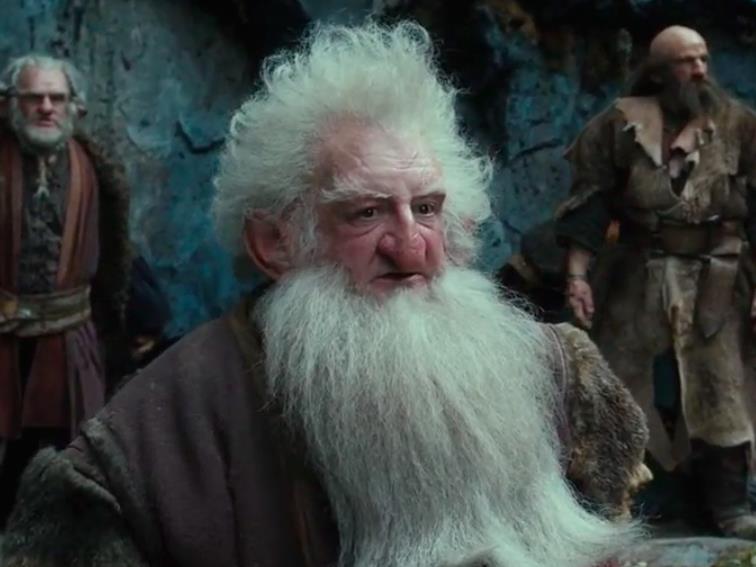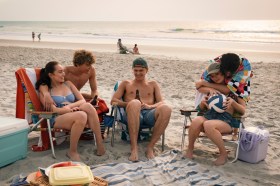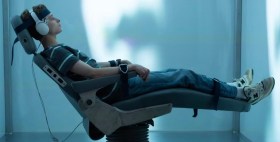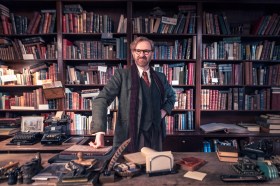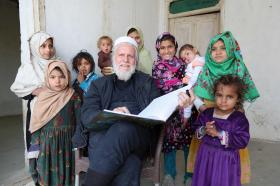Image: Ken Stott as Balin
The criticisms of The Hobbit: An Unexpected Journey were many, and were obvious – during the 169-minute film made from one-third of J.R.R. Tolkien’s 310-page novel, not a lot seemed to happen. In the second feature in the trilogy, and the fifth of six currently-slated excursions into Middle Earth by writer/director Peter Jackson and his co-scribes Fran Walsh and Philippa Boyens, the opposite is true. Throughout The Hobbit: The Desolation of Smaug, just try to find a moment when all is still and quiet.
A contextual pre-titles sting sets the scene for those with short memories, dwarf leader Thorin Oakenshield (Richard Armitage, Captain America: The First Avenger) is put on a quest to reclaim a kingdom and get rid of a dragon by wise wizard Gandalf the Grey (Ian McKellen, Stardust). Twelve months later, of course, the action returns to Thorin’s broader party of dwarves in their time of peril, orcs just the first of their fierce combatants. Helpful hobbit Bilbo Baggins (Martin Freeman, The World’s End) remains in their company, his light fingers – and secretly pilfered One Ring to Rule Them All – more important to their efforts than anyone cares to tell him.
The first feature’s primary concern was laying the foundations for three films evidently over-extending their source material, an aim laboriously brought to the screen, yet perhaps not needed in such detail given the audience’s familiarity with Tolkien’s fictional realm post Jackson’s The Lord of the Rings efforts. Conversely, The Hobbit: The Desolation of Smaug dispenses with introductions, and simply intends to get things done. The latest offering may be similarly lengthy, but its running time is filled not with back story, but with developments. Refreshingly, its tone is entertaining, rather than expository.
Trekking through Elvish country, stopping at Laketown, and eventually finding their way to the Lonely Mountain, Thorin, Bilbo and their offsiders fight their way across the land, making friends (such as elf warrior Tauriel, played by Real Steel’s Evangeline Lilly) and enemies (including The Look of Love’s Stephen Fry as a bumbling village master) along the way. Their march towards the dragon Smaug (voiced by Benedict Cumberbatch, The Fifth Estate) and his cavern of gold is as resourceful as the film is eventful; forests become fearful, elves fling arrows, prophecies beg to be disproved, and the scaly beast earns the terror that quivers in its wake.
As the pacily-plotted narrative bustles by with ample interest, the intricate effects aid in the momentum, the behind-the scenes Weta Workshop army crafting a spectacle out of 3D-rendered CGI. Not everything is at its best as a smattering of lacklustre visuals demonstrate, and the scenic New Zealand shooting location still fares most fruitfully in the imagery; however certain creations, altercations and set-pieces – the titular fire-breathing creature, a run-in with arachnids, and a barrel-busting river rapids ride – provide the stunning aesthetics essential to the film’s realisation of epic fantasy.
Energy is what emanates from Jackson’s second shot at the barely-faithful adaptation of the story, a sense of adventure and enthusiasm matching the lighter tenor of the book. Vigour vibrates within the cast, too, particularly Freeman’s humble hero and his steely final-act showdown with the motion-captured dragon, the latter’s voicing by the former’s Sherlock co-star only adding to the dynamic. With the Lord of the Rings character cameos vastly reduced, newer supports are given room, Lee Pace (Lincoln) as the Elven King Thranduil and Luke Evans (Fast and Furious 6) as Bard the Bowman the most memorable of the bunch. Performances may not be the key to the film, but their success garners a greater sense of investment; for the first time in the trilogy, Bilbo’s expedition with his diminutive friends becomes something worth caring about.
Excess is the other readily apparent element, the big and the bold typically in abundance – this is a swooping, soaring, screaming and careening Peter Jackson film, after all. The constant stream of action does threaten to become tiresome, the length is eventually felt, and the tacked-on love story feels false, unsurprisingly, but each are niggling concerns in an effort that does what it should: The Desolation of Smaug turns its relevant chapters of The Hobbit novel into a movie that, for the most part, engages and remains enjoyable.
Rating: 3.5 stars out of 5
The Hobbit: The Desolation of Smaug
Director: Peter Jackson
US / New Zealand, 2013, 161 mins
Release date: 26 December
Distributor: Roadshow
Rated: M
Actors:
Director:
Format:
Country:
Release:
